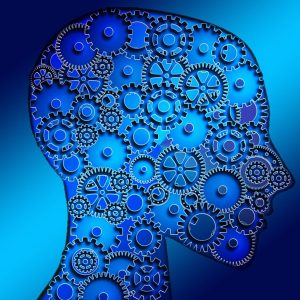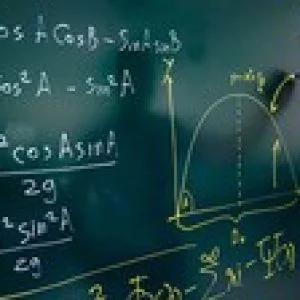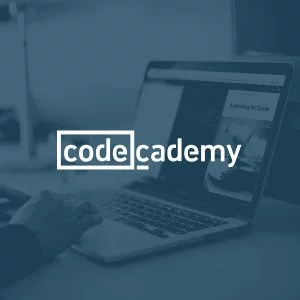
AI is omnipresent in our modern world. It is in your phone, in your laptop, in your car, in your fridge and other devices you would not dare to think of. After thousands of years of evolution, humanity has managed to create machines that can conduct specific intelligent tasks when trained properly. How? Through a process called machine learning or deep learning, by mimicking the behaviour of biological neurons through electronics and computer science. Even more than it is our present, it is our future, the key to unlocking exponential technological development and leading our societies through wonderful advancements.
As amazing as it sounds, it is not off limits to you, to the contrary!
We are both engineers, currently designing and marketing advanced ultra light electric vehicles. Albert is a Mechanical engineer specializing in advanced robotics and Eliott is an Aerospace Engineer specializing in advanced space systems with past projects completed in partnership with the European Space Agency.
The aim of this course is to teach you how to fully, and intuitively understand neural networks, from their very fundamentals. We will start from their biological inspiration through their mathematics to go all the way to creating, training and testing your own neural network on the famous MNIST database.
Instructor Details
Courses : 2
Specification: Machine Learning, Deep Learning & Neural Networks in Matlab
|
11 reviews for Machine Learning, Deep Learning & Neural Networks in Matlab
Add a review Cancel reply
This site uses Akismet to reduce spam. Learn how your comment data is processed.

| Price | $9.99 |
|---|---|
| Provider | |
| Duration | 4 hours |
| Year | 2020 |
| Level | All |
| Language | English |
| Certificate | Yes |
| Quizzes | No |

$49.99 $9.99






shyamsunder Merugu –
I thank the instructor for giving the valuable information on Deep Learning using MATLAB. The course organization is very good. It would be better if more courses were framed on Deep Learning with various applications using MATLAB. Thank you
Igor Goldberg –
Hi I think you are doing a nice job, espacially the first theoretical part is great. But about the second one…. I am quite disapointed. I am relatively ok with coding, but what you do here is not quite clear for at least one main reason with a couple of examples:1 the big one: you should make a plan of attack : what is the exercise. What we get and we asked to do (showing this and not jumping to some website with pics and coding) then show us the layout : we are going to build such and such a code which consists of X parts, this part does like this, that part does like that etc show us THE SCHEME of the code and keep it on the screen all the time you keep coding. ( the scheme I do not mean build a full algorithm of each file, though it could be great! At least show with squares and arrows and stuff the connections between files you create and iterate between them )2 just an example to number 1 above: that website where you download pictures: First not clear in terms of the plan of attack, where we will need this. second: Totaly unclear. Please open a few pics there, open a few labels(or what it is there except the pics), show what is inside, it is very unclear to me, and guess may be unclear to many other people since this is beginners course. And explain please what is this story with first 32 bits, (I mean it explain what you mean by bits , it may be confusing, because you have there grayscales of 255 color depth which is 8 bit, so where did you take first 32 bit from etc…)3,4,5… there are many more examples like 2, which have in common same thing unclear where we are on the big map (the missing scheme ). You explain small things way before you show as the big picture, Another thing this course have only ONE relatively complicated example. I think you should start with a few examples much simpler than current, and in the end make something like the one you have there. Hope you will improve it soon.
Thanos Kanellopoulos –
I was expecting a more thorough explanation of the neural networks in a much slower pace especially in the theoretical part and with the inclusion of lots of examples after each lecture. Struggled to follow the presenter, would be ideal a pointer/mouse/highlight to be used while presenting the theory and how we move from one formulae to the next. With regards the practical part again I would expect a much simpler example with 3 4 samples rather than 60000 just to showcase what was presented in theory and then move slowly to more difficult examples. Takes for granted the master in knowledge of calculus, differential equations and Matlab script writing. Not easy course for begginers. Since I have followed the instructor in previous courses where he did amazing work I will be happy to revise my rating and re buy this course (refund will be requested) if enough more lectures and material is added with slower pace. Good try but needs lots of work before someone spends 50.
Mina Babahaji –
I found several typing errors through the lectures that it makes me worry about the other lectures. About the coding part, its font was so small and additional windows were open that makes it so hard to see the code especially by phone.
Antonio Padilla Torres –
Such a great course, going all through the neural networks and the math s behind them.
Aniebiet Akpan –
Very good explanation.
Garima Mahendru –
The theory part was very very basic…. need deeper mathematical insight and signal processing dataset and examples
Joan I –
Tutor should make use of pointers so students can understand parts of slides being referred to.
Madhu –
The content of the course was good
Xavier Aguas –
Excellent example to learn ANN
Maxibon Delashmoe –
Excellent course. Good explanations of the theory and walk through of the code.